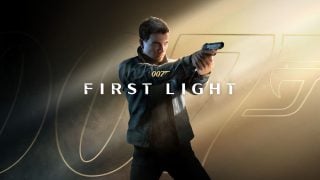You may have caught wind of a game development tool Activision Blizzard touted over the past week, referred to as the “Diversity Space Tool” in shorthand. Developed by subsidiary King (the Swedish developer who makes Candy Crush Saga, among others), it basically has a set of metrics to judge a game’s “diversity” by allocating points for things like race, ethnicity, gender, body type, and so on. Basically, it tries to take the complicated struggle for diversity and inclusion in media and water it down into an objective graph that treats being a straight white able-bodied cis dude as the default.
The graph is either morbidly hilarious or grimly dystopian depending on who you ask (I’d say both) and multiple ABK devs denied using the tool, roasting it alongside the general public. It was to the point that the company attempted to clarify its usage. But eyes were on it now. This wasn’t a new toy — it went back to 2016. And Twitter power user UltimaShadowX brought attention to a GDC 2017 talk from King developers where they used the tool to analyze a number of games: including Super Mario Run to The Legend of Zelda: Twilight Princess.
It’s an inherently hilarious demonstration that proves the inefficacy of the tool in actual practice — the selection of characters from both franchises are incomplete, and presumptions are made that are just straight up bewildering. The presenters give Mario points for having two female characters out of five selected (we all know Mario to be a feminist franchise, after all) and call the characters “presumably straight” (have you seen Bowser fanart on the internet?) before clearly not knowing much about the Zelda characters they discuss. They seem generally stiff and unprepared, which doesn’t help sell the idea that Toad and Toadette are children (which is an interesting interpretation, at least).
Now, examining the diversity of Nintendo games is not an inherently bad practice. It’d be perfectly reasonable to look at the Mario cast, notice that all the human characters have the same light skin tone, and think about why that is. Nothing like “cancellation” or whatever you’d call it, but having a discussion about these issues through a critical lens is warranted and usually helpful. The problem with ABK’s tool is not that it’s tackling these issues, but that it seeks a simple quantitative solution to a complex qualitative problem. And I do think it’s worth noting that among Nintendo’s more recent franchises — Splatoon and ARMS as examples — there is a bit more variety in skin tone and general appearance.
The other issue with the tool is that it can actually run counter to its intended purpose. During the GDC talk, the presenters give Zelda points for Ganondorf’s race and ethnicity, as a dark-skinned man from a non-European culture. But he’s notably the villain of the series, and actual critics have pointed out the pernicious aspects of playing a white man defending a European-styled civilization from a black man of vaguely-middle eastern origins. Obviously the issues are complex (and again I’m not trying to cancel Ocarina of Time or anything), but it shows that merely having a character who ticks off diversity checkboxes isn’t enough. You have to think critically about “representation” beyond what an objective metric can tell you.
Anyway, feel free to speculate on what score you would get on the Diversity Space Tool. I’m a disabled trans lesbian without an hourglass figure so I think I’d score pretty dang high.
Leave a Comment


